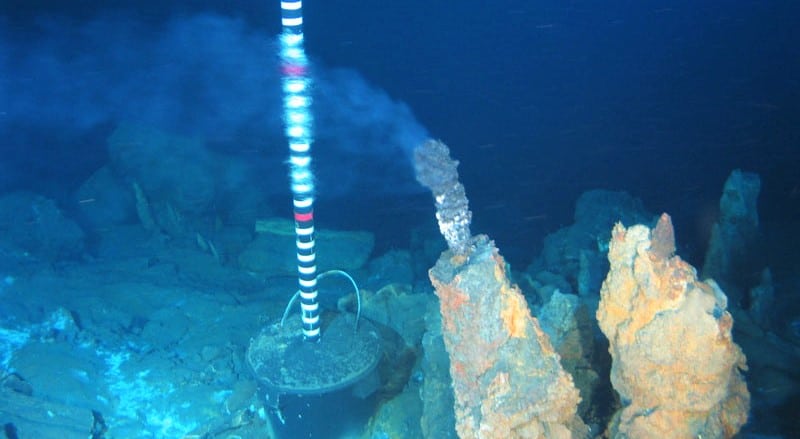Given the exponential threats it poses to the marine environment, deep seabed mining is destined to become a contentious global environmental issue. The risks are significant enough to make a mockery of any precautionary principle.
A number of Pacific Island nations have already sponsored mining projects including Nauru, Tonga, Kiribati and the Cook Islands, and Australia is set to play a major role. The raison d’etre is to satisfy the demand for critical minerals required for technologies such as solar panels and batteries designed to reduce greenhouse emissions.
According to CSIRO analysis of seabed mining, Australia’s deep ocean mineral resources beyond the three nautical miles from the coast governed by Commonwealth legislation (known as the “adjacent area”) include manganese nodules, rare-earth minerals, and base and precious metals including copper, zinc, led, gold and silver deposits.
Environment Minister Tanya Plibersek has said she “is concerned about the broad and unknown environmental impacts”, saying, “Australia does not believe deep sea mining should take place unless strong environmental regulations are in place.”
Nevertheless, CSIRO, leading a consortium of organisations, has been contracted by Canadian miner The Metals Company to develop a framework to improve operational efficiencies and reduce the uncertainty of environmental impacts over time. The first project is in an area known as the Clarion Clipperton Zone (CCZ), seven kilometres below the surface, rich in the minerals required to make batteries. In 2021, Nauru’s president applied for approval to begin mining in two years.
In 1994, the UN established the International Seabed Authority (ISA) to organise, regulate and control all mineral-related activities in the international seabed “for the benefit of mankind as a whole”. The Nauru project is the first to be presented for review by the ISA for approval, thus setting a precedent for all future projects.
Major opposition to deep seabed mining is growing. In 2021, a majority of the 160 member states of the International Union for Conservation of Nature (IUCN) voted in favour of a moratorium on deep-sea mining (though the IUCN itself has no jurisdiction to implement such a ban). More than 700 science and policy experts from 44 countries signed a statement calling for a pause on deep-sea mining. In 2022, France became the first country to call for an international ban.
Meanwhile, more than 100 nongovernment organisations including Greenpeace Aoteroa have joined the Deep Sea Conservation Coalition, which has called for a suspension of deep-sea mining.
The group’s ocean spokesperson Jessica Desmond says, “Deep sea ecosystems are some of the most important ecosystems on the planet and we are seeing this relentless and reckless push to mine these areas, despite the fact that scientists are clearly warning the outcomes could be disastrous.”
Less than 10 percent of the world’s oceans have been mapped using current methodology. Scientists estimate that 91 percent of ocean species are yet to be classified, and biologists estimate less than 10 percent of deep-sea creatures have been discovered.
A recent paper published by a consortium of scientific experts provided evidence that noise from deep-sea mining may span vast ocean areas and that the potential harm is largely overlooked. As the report explains, collecting adequate data to assess ecological risks from mining noise to deep-sea ecosystems is complex, expensive and unlikely to happen within a decade.
Some of the harm includes the permanent removal or burial of critical seafloor habitat and the creation of large suspended sediment plumes. But according to the paper, the biggest concern is underwater noise potentially generated by mining activities.
Underwater noise has a devastating impact on marine species. Research indicates that noise from a single mining operation can ensonify roughly 5.5 million square kilometres above ambient noise levels, posing a danger to species living in the affected areas.
Many cetacean species occur throughout the CCZ, including endangered migratory blue and sei whales, vulnerable fin and sperm whales, false killer whales and deep-diving beaked whales. Noise impacts cause masking, stress and major hearing loss, and can inhibit communication and the ability to source food. Mother-calf separation and stranding can create immediate effects on survival.
Current research fails to focus on the cumulative impacts of an exponentially noisy ocean with increased shipping, oil and gas exploration, military sonar and seismic testing. Noise impacts not only cetaceans but fish, invertebrates, turtles, plankton, coral and a host of marine species. The UN Environment Program stresses their importance, emphasising ongoing threats such as overfishing, nutrient pollution, dead zones, and the 8 million tonnes of plastic going into the ocean each year.
